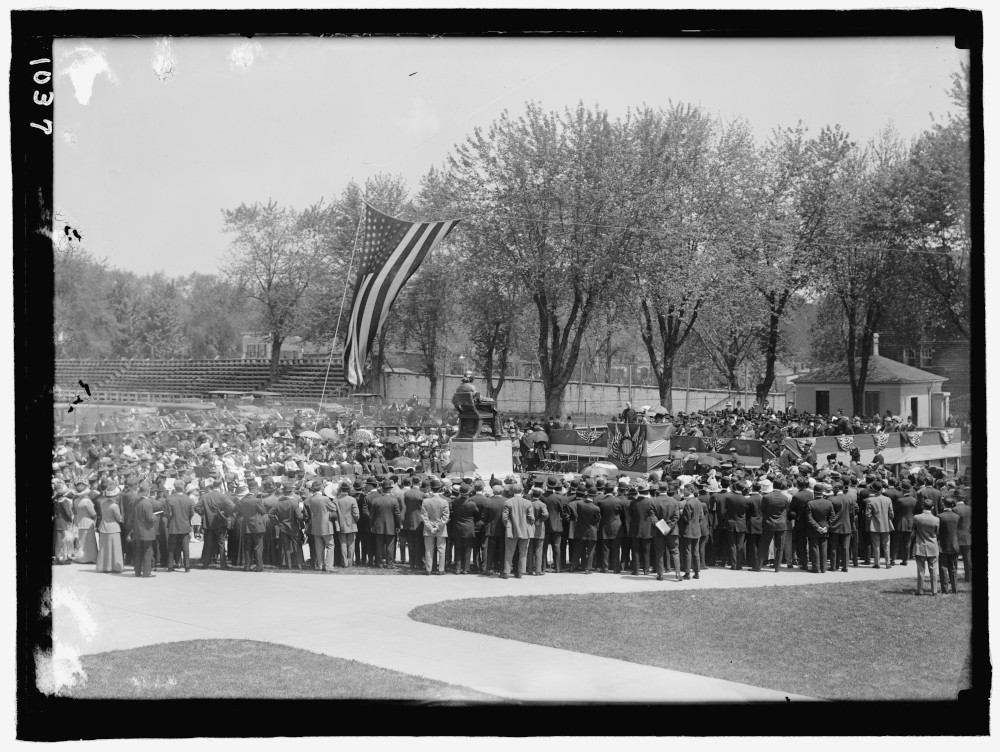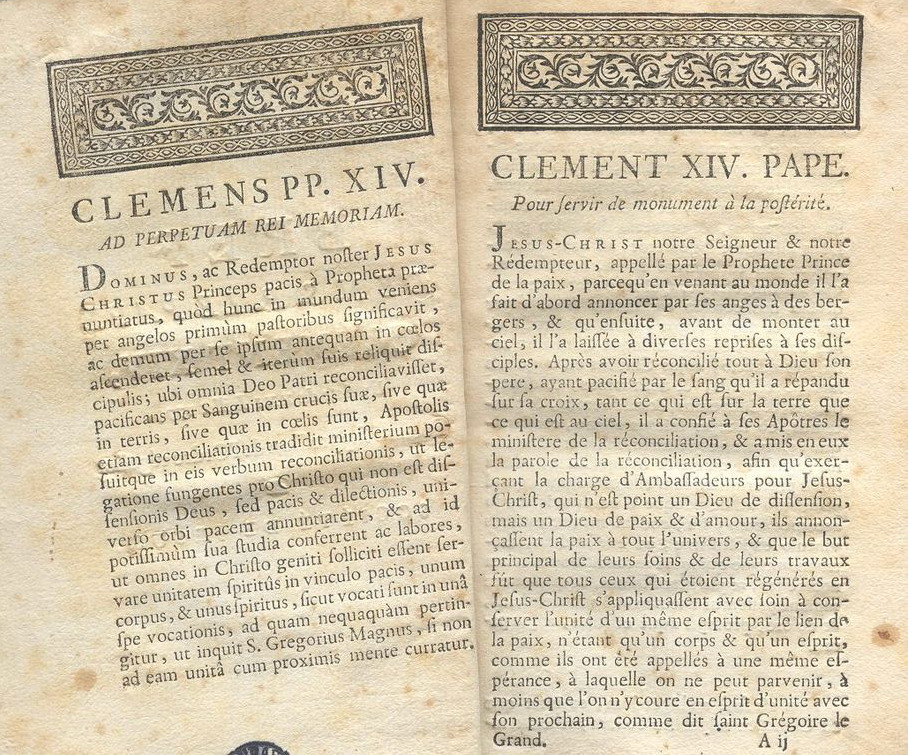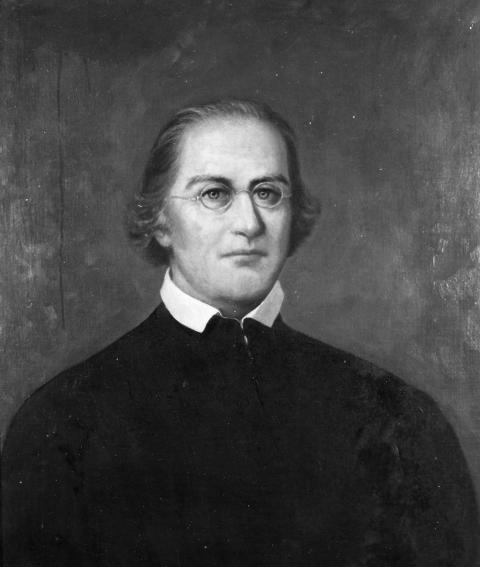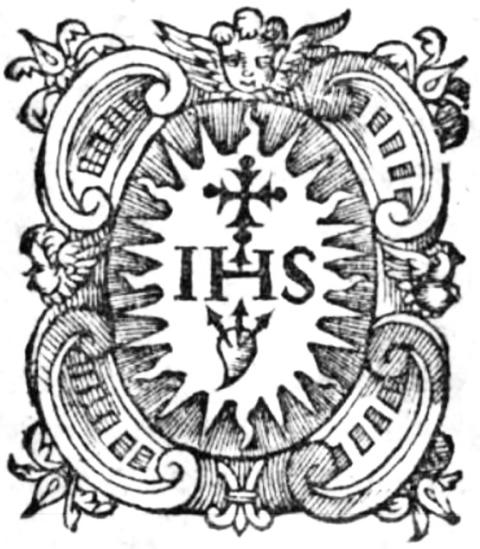
A photo of the May 4, 1912, dedication of the John Carroll statue at Georgetown University. (Wikimedia Commons/The Library of Congress)
When the United States declared its independence from Great Britain in 1776, virtually every priest in the young country was an ex-Jesuit. As the country grew westwards, it reached into territories where earlier generations of Jesuits had ministered to Native populations and to colonists from France and Spain.
The missionary seeds planted in the 17th and 18th centuries would, with fits and starts and sometimes failures, continue to bear fruit right up to today when the Society of Jesus is the most prominent religious order in U.S. Catholic higher education.
Jesuit Fr. David Collins has produced a short, well organized book, The Jesuits in the United States: A Concise History, that makes the fascinating and complex history of the order accessible to a new generation of readers. It is not easy to compress such a vast and varied subject into a volume of only 195 pages, but Collins concludes each chapter with a bibliography for those who wish to dive deeper into the history he has just presented in condensed form. At no point did Collins' efforts to condense this history do violence to his subject, a remarkable achievement.
The first Jesuits to arrive in what would become the United States were Spanish Jesuits coming north from missions in the Caribbean and in Mexico. The results were uneven. In St. Augustine, Florida, the mission failed and was withdrawn but in the Sonoran desert, along what is now the Mexican-U.S. border, some 30 churches served 100 villages.
"The mission's purpose was the evangelization of local peoples and their protection from the crassest forms of Spanish exploitation, even as it led ineluctably to their submission to colonial control," Collins writes. When the Spanish king suppressed the Jesuits in 1767, their missions passed to the Franciscans and Dominicans. The Jesuits did not return to these parts for over 100 years.
In New France, the Jesuits similarly met with frustration at first, when their settlement at Penobscot Bay, in what is now Maine, succumbed to attacks by hostile British Puritans. In Quebec, after some initial difficulties, they opened a college in 1634 and a mission to the Indigenous population further West. Jesuits like Jacques Marquette made some of the first maps of the interior of the continent and Jesuits often accompanied fur traders in order to meet Natives peoples and found missions.
"Actual mission operations," Collins observes, "found themselves tugged in two sometimes rival, sometimes complementary, directions: to evangelize the Indigenous populations and to provide religious support for the French colonial population." This challenge marked Jesuit efforts in all three empires.
Maryland was the only English colony founded by Catholics and the colonial proprietor, Lord Baltimore, had recruited Jesuits to run the missions there and they tended to the spiritual needs of the Catholic colonists. Two Jesuit priests and a lay brother were on the Ark and the Dove when the ships sailed into Chesapeake Bay in 1634 and they were able to perform their ministry in public in the new colony, a remarkable thing seeing as Jesuits were still legally barred from England. When Protestants took over the colony mid-century, they captured five Jesuits, putting three ashore in land controlled by a hostile, native tribe, and sending two to England in chains.
The Maryland Jesuits sustained themselves like other gentlemen by accepting land from the proprietor and cultivating it. They became plantation farmers, which involved them over time in the great evil of slavery, which overtook indentured servitude as the principal source of labor in the course of the 17th century, and lay the groundwork for trouble with Jesuit supervisors into the 18th century. The Jesuits had been founded as an urban and missionary order, focused on opening schools in cities and missions to non-Christians on the frontiers, not running farms and becoming sedentary.

The brief 1773 Dominus ac Redemptor by which Pope Clement XIV suppressed the Society of Jesus (Wikimedia Commons)
The suppression of the order, first by Bourbon kingdoms in Portugal, France, Spain and Italy, and then in 1773, by papal decree, receives an entire chapter. It is a complicated story but one impossible to summarize further than Collins does. It affected the young Republic differently from the way it affected other countries. As noted, in the territories out west, which would later be included in the U.S., the Jesuits were forced to turn their missions over to the Franciscans and Dominicans.
What shines through in the various episodes Collins details from the years of the suppression is the great chaos of the time.
To take only one example, Jesuit Fr. Anthony Kohlmann was from Alsace and had studied at several seminaries, including a Capuchin one, in the years after the French Revolution before becoming a Jesuit in Russia. That was the only province to survive the suppression because Catherine the Great forbade promulgation of the papal suppression. From Russia, he was sent to the Maryland missions, arriving in 1805.

A portrait of Jesuit Fr. Anthony Kohlmann, an American priest who was the president of Georgetown University. (Wikimedia Commons/Georgetown University Library)
By then, the order had been reconstituted in the young Republic. Kohlmann unsuccessfully tried to get the order to focus on the growing metropolis of New York, but instead, he was sent to the sleepy new capital city of Washington, where he founded the Washington Seminary, what is now Gonzaga College High School. Kohlmann successfully convinced the order's superiors to allow the Jesuits to break their rule and charge tuition at the school, a fact that has tortured parents to this very day.
The most famous ex-Jesuit in the United States was John Carroll, by then the bishop of Baltimore. Collins' assessment of Carroll is correct, and also shows Collins' own judiciousness as an historian.
"Although one must always be wary of identifying a single personality as the architect of major change," he writes, "in this instance, Carroll deserves considerable credit for the gradual but sure emergence of a vigorous Catholic Church in the period of early national independence."
Advertisement
Carroll confronted early tensions among nationalities, rebellious clergy and quasi-schismatic laity, and if he did not succeed in eliminating the difficulties, he usually ameliorated them. Sometimes, the significance of the "Maryland tradition" is overstated. The roots of the U.S. Catholic Church we know today are found in Kilkenny and Bavaria, in Sicily and Poland, in Manila and Mexico, as much as in Baltimore. Still, Carroll deserves credit for founding seminaries, helping foreign clergy assimilate, enacting a rudimentary canon law and other achievements without which the growth of the Catholic faith in this country would have been hobbled in various ways.
This early history of the Jesuits in the future and newly born United States is fascinating and I shall conclude my review in my next column.









